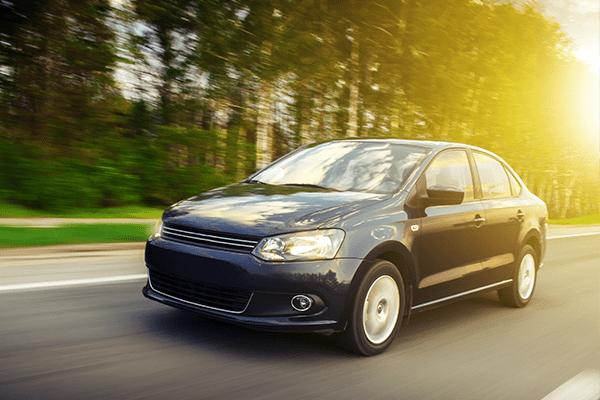
Understanding the many aspects of auto insurance will help ensure you have the financial protection you need.
Auto Insurance Coverage Overview
Your auto insurance policy may include six coverages. Each coverage is priced separately.
1. Bodily Injury Liability
This coverage applies to injuries you, the designated driver or policyholder cause to someone else. You and the family members listed on the policy are also covered when driving someone else’s car with their permission.
It’s very important to have enough liability insurance, because if you are involved in a serious accident, you may be sued for a large sum of money. Definitely consider buying more than the state-required minimum to protect assets such as your home and savings.
2. Medical Payments or Personal Injury Protection (PIP)
This coverage pays for the treatment of injuries to the driver and passengers of the policyholder’s car. At its broadest, PIP can cover medical payments, lost wages and the cost of replacing services normally performed by someone injured in an auto accident. It may also cover funeral costs.
3. Property Damage Liability
This coverage pays for damage you (or someone driving the car with your permission) may cause to someone else’s property. Usually, this means damage to someone else’s car, but it also includes damage to lamp posts, telephone poles, fences, buildings or other structures your car hit.
4. Collision
This coverage pays for damage to your car resulting from a collision with another car or object or as a result of flipping over. It also covers damage caused by potholes. Collision coverage is generally sold with a deductible of $250 to $1,000-the higher your deductible, the lower your premium. Even if you are at fault for the accident, your collision coverage will reimburse you for the costs of repairing your car minus the deductible. If you’re not at fault, your insurance company may try to recover the amount they paid you from the other driver’s insurance company. If they are successful, you’ll also be reimbursed for the deductible.
5. Comprehensive
This coverage reimburses you for loss due to theft or damage caused by something other than a collision with another car or object, such as fire, falling objects, missiles, explosion, earthquake, windstorm, hail, flood, vandalism, riot, or contact with animals such as birds or deer. Comprehensive insurance includes more extensive coverage which will add to your overall cost. One tactic people use to help lower their premiums is to increase their deductible. Comprehensive insurance often include glass coverage and replacement. The policy will reimburse you if your windshield is cracked or shattered. Some companies offer glass coverage with or without a glass claim deductible. States do not require that you purchase collision or comprehensive coverage, but if you have a car loan, your lender may require you carry it until your loan is paid off.
6. Uninsured and Underinsured Motorist Coverage
This coverage will reimburse you, a member of your family, or a designated driver if one of you is hit by an uninsured or hit-and-run driver.
What you need to know about policy limits
Coverage limits are how much your policy will pay out on a claim for a covered peril. Each state has minimum auto insurance coverage limits. Often times the state minimums are lower than the recommend policy limits of our agency. Here is a comparison between state minimums and recommended limits.
State minimum coverage limits:
Bodily Injury: $25,000 per person/$50,000 per accident – Covers medical injury costs for accidents where you are at fault.
Property Damage: $25,000 – Covers physical damage to other vehicles or stationary objects resulting from an accident where you are at fault.
Medical Payments: $1,000 per person
Un/Underinsured Motorist (Bodily Injury) $25,000 per person/$50,000 per accident
Recommended auto policy limits:
Bodily Injury: $250,000/$500,000
Property Damage: $100,000
Medical Payments: $5,000
Un/Underinsured Motorist (Bodily Injury): $250,000/$500,000
The costs associated with auto accidents continue to increase. Medical costs can add up quickly and property damage can easily exceed the minimums with expensive, high-end automobiles on the road.
Here is a claims example of how low policy limits could potentially hurt you financially.
- You are traveling along on the highway and cause a multi-car accident where 3 vehicles are involved. Here is the resulting damage:
- Each vehicle has one drive and two passenger totally 9 people involved in the accident.
- Out of the 9 people 6 suffer minor injuries resulting in $15,000 a piece .
- 2 people have moderate injuries resulting in approximately $30,000 each.
- 2 more people suffer major injuries resulting in approximately $50,000 each.
- And one person requires a medivac flight and had significant life threatening injuries requiring extensive medical care costing over $100,000 in medical care
The total in bodily injury claims equals $350,000.
If you had minimum state limits you would be under insured by $300,000. In this case you could be legally responsible to cover the $300,000 deficit out of pocket. It is good practice to compare the cost of auto insurance with minimum limits versus recommended limits. You may discover that it’s worth the extra expense.
It’s also worth noting that vehicles on the road are expensive and repairs can cost a lot. According to Kelly Blue Book the average cost for a new car is $48,008 with some vehicles ranging from $70,000 to $90,000 plus. With this in mind it would be easy to exceed the property damage minimum limit.
Collision and Comprehensive Auto Coverage Provides Extra Protection
What does it mean to have full auto coverage?
Full coverage includes liability, collision and comprehensive insurance. In most states, the law requires motorists to have liability coverage. New Hampshire is one of a few states that doesn’t require drivers to have auto insurance.
Liability insurance covers accidents where you are at fault. It covers property damage and personal injury claims. Consider adding collision and comprehensive coverage for extra protection. People who add collision and comprehensive lower the risk of paying out-of-pocket for accidents or damages.
Collision covers claims that result from an accident with another car, or stationary object. It provides coverage whether you’re at fault or not. Collision provides protections for
- Accidents caused by uninsured motorists
- Collisions with another car when it’s your fault
- Collision with another car when it’s not your fault
- Hit and run accidents
- Collision with a stationary object
Comprehensive insurance covers incidents that are not covered by liability or collision. It covers “acts of God,” or things that are out of the driver’s control. Some examples include:
- Falling objects such as trees or limbs
- Natural disasters
- Civil commotion
- Animal impacts
- Broken windows
- Acts of terrorism
- Theft
- Vandalism
A formula you can use to decide if collision and comprehensive is worth the extra cost
5 (years) X Collision Premiums (per year) >= Value of your car
Does your auto insurance cover items stolen from my car?
No one is immune to car break-ins. Thefts and auto break-ins happen in cities and small towns throughout Vermont. Many people don’t know that your auto insurance does not cover the theft of personal items from your car. Are you surprised? Let me explain. The robbery of personal items from your vehicle can happen anytime or anywhere. The two types of items stolen are personal items such as cell phones, wallets, or purses, and items stolen off the car that are permanently attached, such as airbags or factory-installed electronics.
How to prevent the theft of items from my car
Cities such as Rutland and Colchester, Vermont, report higher auto theft rates, but small Vermont towns are not immune. Thieves are opportunistic and willing to take advantage when you let your guard down, such as parking at home or a friend’s house and not locking your car doors. It’s best not to assume your belongings are safe in your car. In fact, it’s common for auto break-ins to happen right in your driveway or on the street in front of your house. Thirty-six percent of all larceny police reports are for items stolen from parked cars. Here are some tips to help prevent the theft of your belongings.
- Lock your car
- Enable a car alarm system
- Park in a well-lit spot at night or in a garage
- Do not leave valuables in plain sight
- Stow small items out of sight in the glove compartment or center console
- Lock larger valuable items in your trunk, so they are out of sight
- Take valuable items with you when possible
Your homeowners, renters, or condo insurance covers personal items stolen from your vehicle.
Your homeowner’s or renter’s insurance covers stolen personal property outside the home, including from your car. Protection for your belongings away from home is one reason to get renters insurance.
Here’s an example that will help clarify which type of policy covers the losses or damages if a vehicle break-in.
Example: You parked your car on the street, and someone pops out the lock to gain entry. They steal your laptop, computer, cell phone, and expensive watch. The thief also rips the factory-installed stereo from the dash. Here’s how you’re covered.
-
- Dents, scratches, and damages to the vehicle by the thief – Comprehensive Auto
- Replacement and repair of the car for the stolen factory-installed stereo – Comprehensive Auto
- Replacement of laptop, cell phone, and expensive watch – Homeowners, Condo, or Renters Insurance
Your deductible amount is one thing to consider before filing a claim for items stolen from your car. If the stolen items do not exceed the amount of your deductible, then you may choose not to file the claim and instead pay for the loss out-of-pocket.
Protection for personal items is an excellent reason to get renters insurance, and it’s not very expensive or hard to get. To find out more about renters insurance, talk to your insurance agent. Talk with an insurance advisor to ensure all your personal property is covered.
The difference between a canceled and non-renewed auto policy.
There is a big difference between when an auto insurance company cancels a policy and when it chooses not to renew it.
Insurance companies cannot cancel a policy that has been in force for more than 60 days except:
- If you fail to pay the premium.
- You have committed fraud or made serious misrepresentations on your application.
- Your driver’s license has been revoked or suspended.
Non-renewal is a different matter.
Either you or your insurance company can decide not to renew the policy when it expires. Depending on the state you live in, your insurance company must give you a certain number of days notice and explain the reason for non-renewal before it drops your policy. If you think the reason is unfair or want a further explanation, call the insurance company’s consumer affairs division. If you don’t get an explanation, call your state insurance department.

